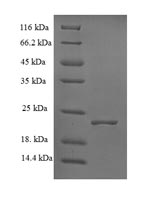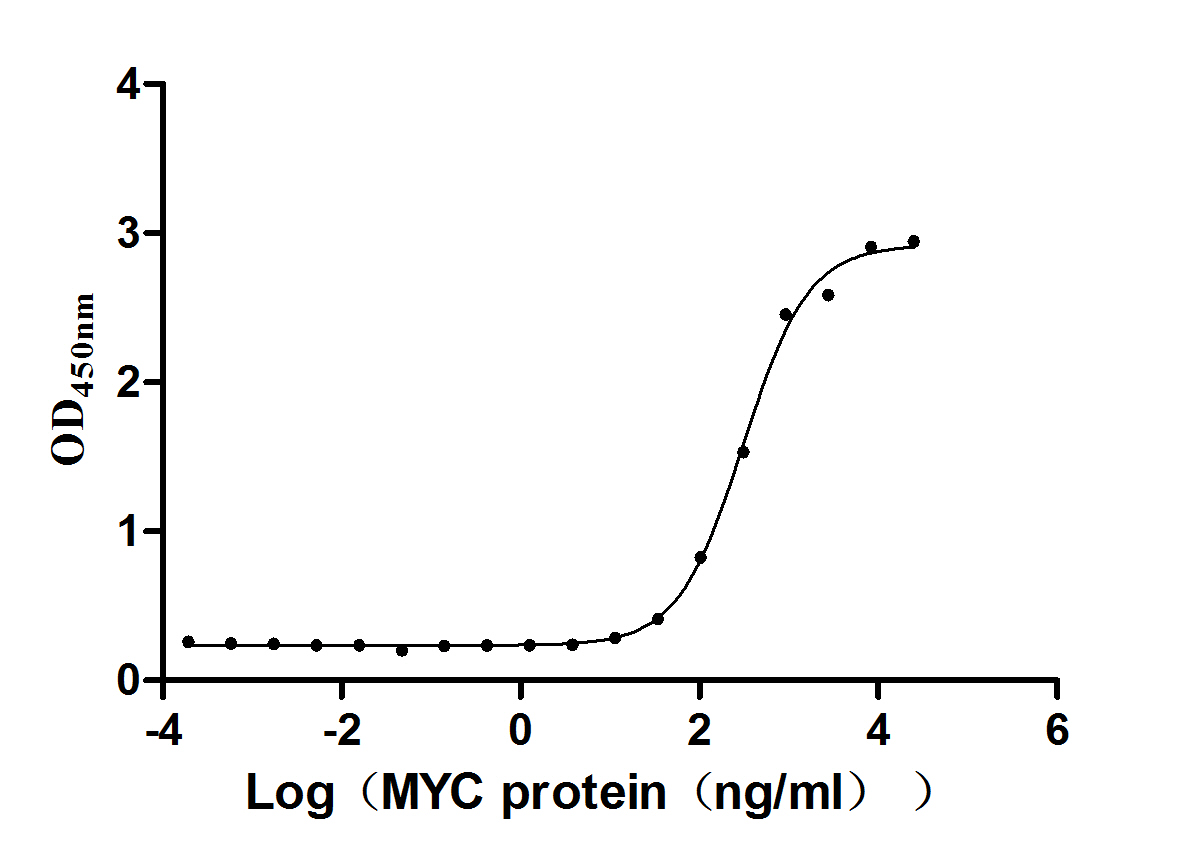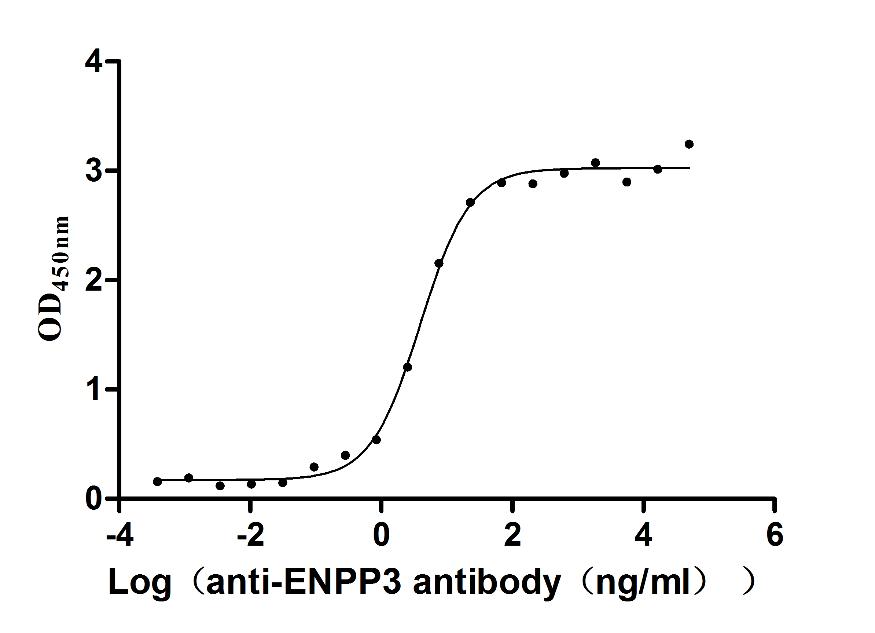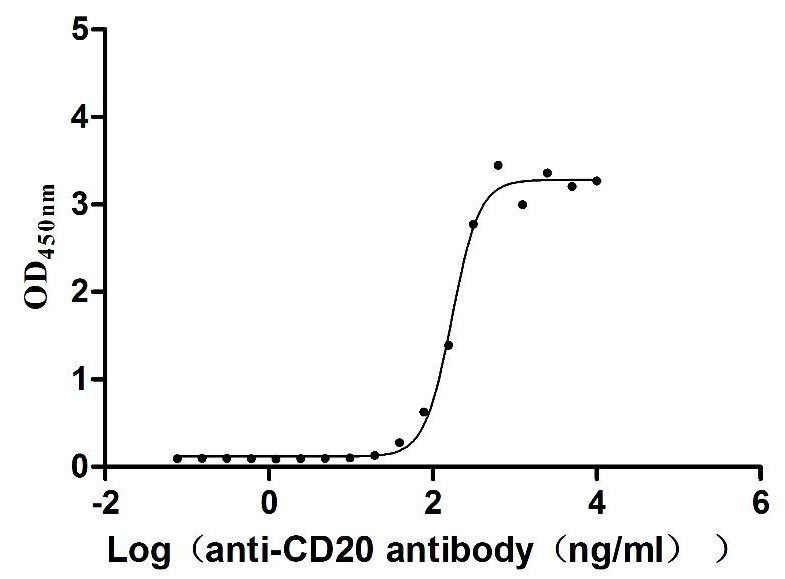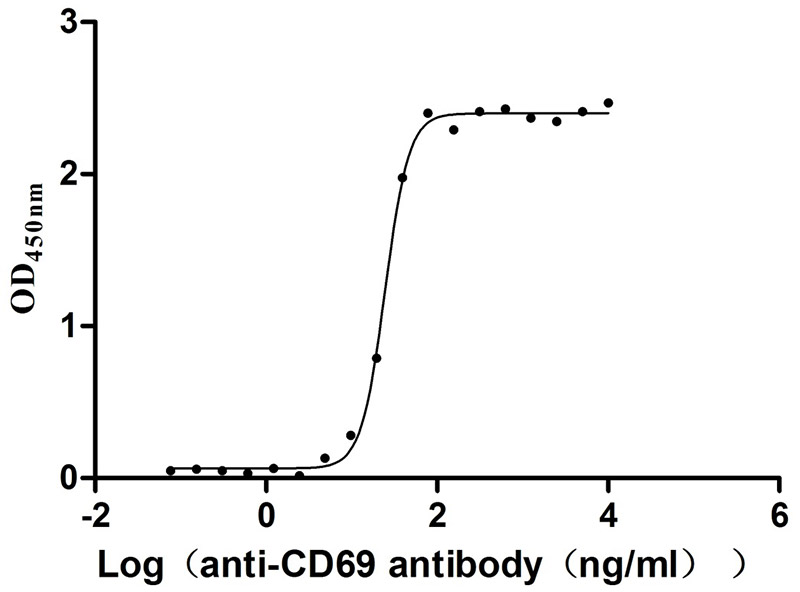Recombinant Escherichia coli S-ribosylhomocysteine lyase (luxS)
In Stock-
中文名称:大肠杆菌luxS重组蛋白
-
货号:CSB-EP541717ENT
-
规格:¥2328
-
图片:
-
其他:
产品详情
-
纯度:Greater than 90% as determined by SDS-PAGE.
-
基因名:luxS
-
Uniprot No.:
-
别名:luxS; ygaG; b2687; JW2662; S-ribosylhomocysteine lyase; EC 4.4.1.21; AI-2 synthesis protein; Autoinducer-2 production protein LuxS
-
种属:Escherichia coli (strain K12)
-
蛋白长度:Full Length of Mature Protein
-
来源:E.coli
-
分子量:23.3 kDa
-
表达区域:2-171aa
-
氨基酸序列PLLDSFTVDHTRMEAPAVRVAKTMNTPHGDAITVFDLRFCVPNKEVMPERGIHTLEHLFAGFMRNHLNGNGVEIIDISPMGCRTGFYMSLIGTPDEQRVADAWKAAMEDVLKVQDQNQIPELNVYQCGTYQMHSLQEAQDIARSILERDVRINSNEELALPKEKLQELHI
Note: The complete sequence including tag sequence, target protein sequence and linker sequence could be provided upon request. -
蛋白标签:N-terminal 6xHis-tagged
-
产品提供形式:Liquid or Lyophilized powder
Note: We will preferentially ship the format that we have in stock, however, if you have any special requirement for the format, please remark your requirement when placing the order, we will prepare according to your demand. -
缓冲液:Tris-based buffer,50% glycerol
-
储存条件:Store at -20°C/-80°C upon receipt, aliquoting is necessary for mutiple use. Avoid repeated freeze-thaw cycles.
-
保质期:The shelf life is related to many factors, storage state, buffer ingredients, storage temperature and the stability of the protein itself.
Generally, the shelf life of liquid form is 6 months at -20°C/-80°C. The shelf life of lyophilized form is 12 months at -20°C/-80°C. -
货期:3-7 business days
-
注意事项:Repeated freezing and thawing is not recommended. Store working aliquots at 4°C for up to one week.
-
Datasheet & COA:Please contact us to get it.
相关产品
靶点详情
-
功能:Involved in the synthesis of autoinducer 2 (AI-2) which is secreted by bacteria and is used to communicate both the cell density and the metabolic potential of the environment. The regulation of gene expression in response to changes in cell density is called quorum sensing. Catalyzes the transformation of S-ribosylhomocysteine (RHC) to homocysteine (HC) and 4,5-dihydroxy-2,3-pentadione (DPD).
-
基因功能参考文献:
- study demonstrated that luxS affects the expression of flagella and Stx2e toxin, 2 important STEC virulence factors PMID: 24848979
- LuxS contributes to virulence in avian pathogenic Escherichia coli O78:K80:H9. PMID: 23958403
- Proteomic profiling of luxS mutants showed only a few proteins were differentially expressed and those that were altered suggested a metabolic rather than communication role for the E. coli luxS gene product. PMID: 23651217
- Deletion of the luxS gene reduced the bacterial virulence by 31.5-fold in ducklings. PMID: 23046700
- Polyphosphate degradation in stationary phase triggers biofilm formation via LuxS quorum sensing system in Escherichia coli. PMID: 23226268
- Pfs and LuxS synthesize AI-2 in vitro from S-ribosylhomocysteine. PMID: 23236852
- luxS deletion significantly increases swimming motility and flagella synthesis in Escherichia coli K12. PMID: 20875395
- These data are consistent with the function of LuxS as an important metabolic enzyme but appear not to support the role of AI-2 as a true signal molecule for E. coli W3110 under the investigated conditions. PMID: 16321939
- The active form of LuxS contains a metal-bound water and a thiolate ion at Cys-83, consistent with the proposed roles of the metal ion (Lewis acid) and Cys-83 (general acid/base) during catalysis. PMID: 17014073
显示更多
收起更多
-
蛋白家族:LuxS family
-
数据库链接:
KEGG: ecj:JW2662
STRING: 316385.ECDH10B_2854
Most popular with customers
-
Recombinant Human papillomavirus type 16 Protein E7 (E7) (Active)
Express system: E.coli
Species: Human papillomavirus type 16
-
Recombinant Human Intestinal-type alkaline phosphatase (ALPI) (Active)
Express system: Mammalian cell
Species: Homo sapiens (Human)
-
Express system: Mammalian cell
Species: Macaca fascicularis (Crab-eating macaque) (Cynomolgus monkey)
-
Recombinant Dog B-lymphocyte antigen CD20 (MS4A1)-VLPs (Active)
Express system: Mammalian cell
Species: Canis lupus familiaris (Dog) (Canis familiaris)
-
Recombinant Human Early activation antigen CD69 (CD69), partial (Active)
Express system: Mammalian cell
Species: Homo sapiens (Human)
-
Recombinant Human Cell adhesion molecule 1 (CADM1), partial (Active)
Express system: Mammalian cell
Species: Homo sapiens (Human)
-
Recombinant Human CD70 antigen (CD70), partial (Active)
Express system: Mammalian cell
Species: Homo sapiens (Human)
-
Recombinant Human Gastric inhibitory polypeptide receptor(GIPR),partial (Active)
Express system: Mammalian cell
Species: Homo sapiens (Human)

